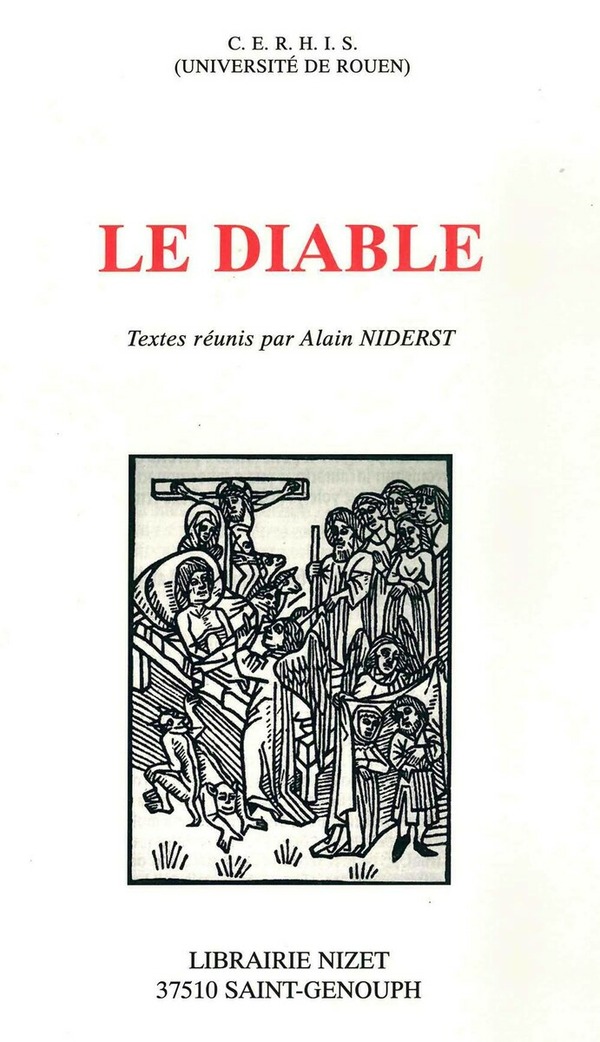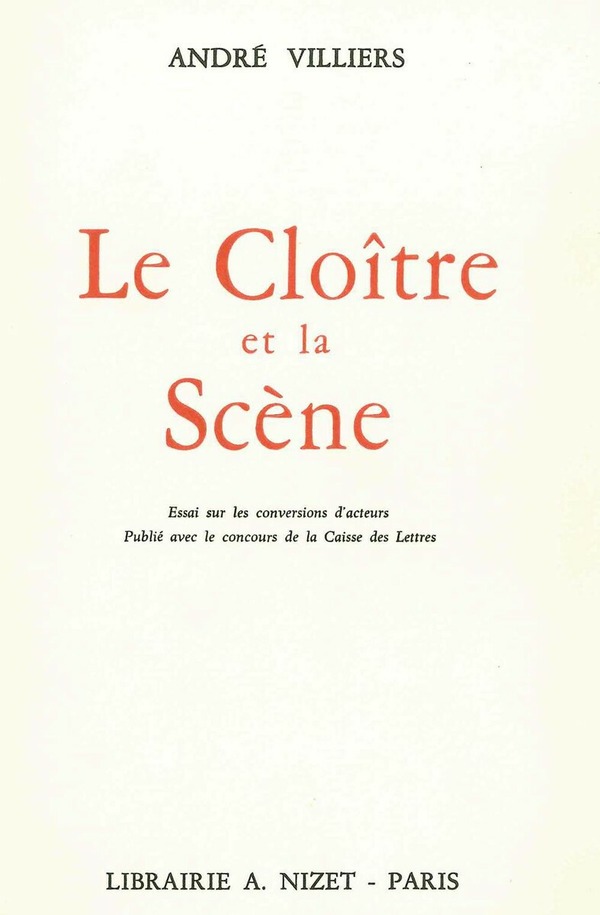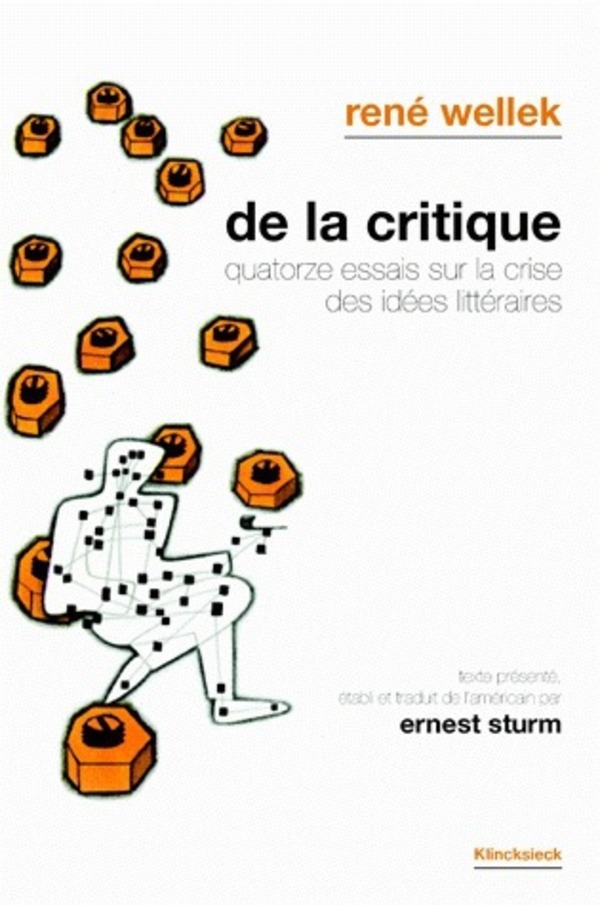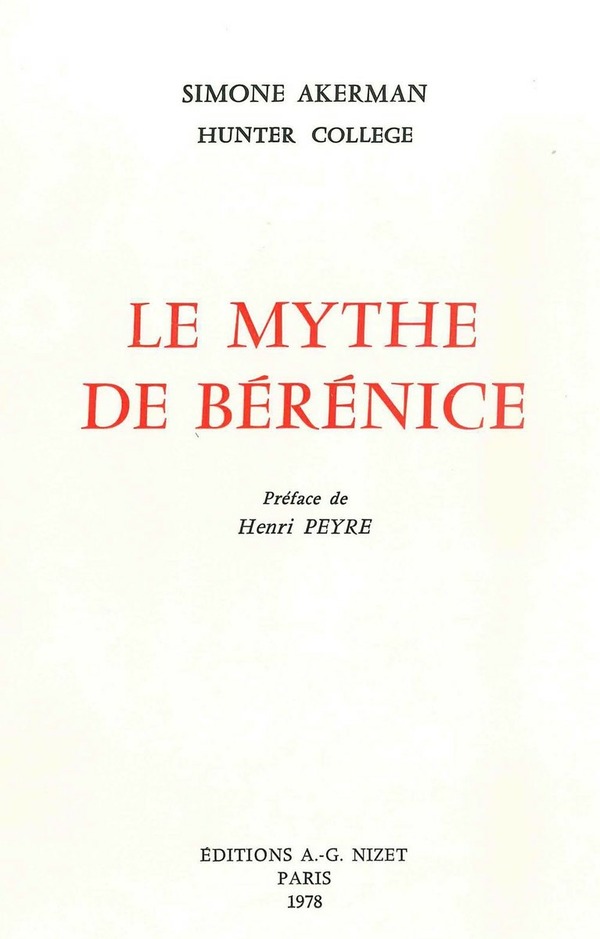Études chinoises XXXIII-1 (2014)
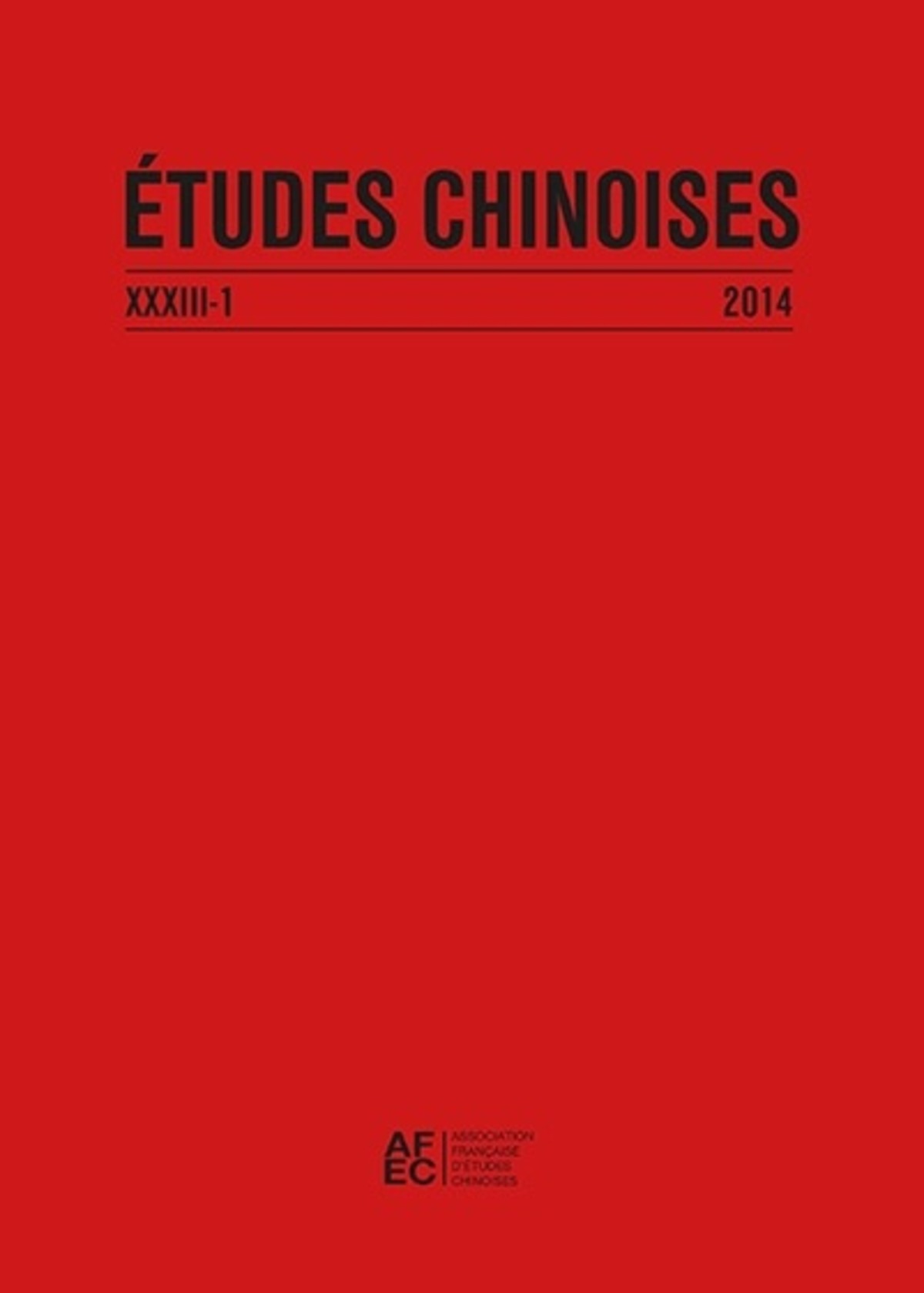
- 208 pages
- Livre broché
- 14.9 x 21 cm
- Études chinoises
- Parution : 27/10/2014
- CLIL : 3146
- EAN13 : 9782252039403
- Code distributeur : 47951
Présentation
RÉSUMÉS Alain ArraultLes activités, le corps et ses soins dans les calendriers de la Chine médiévale (IXe-Xe s.) Les activités, ce qu'il est conseillé de faire ou de ne pas faire, apparaissent dans les rubriques journalières des calendriers chinois à l'aube de la dynastie des Tang (618-907). Nous est parvenu, grâce aux documents retrouvés à Dunhuang, un nombre relativement conséquent de calendriers, environ une cinquantaine, répartis sur une période de temps parfaitement délimitée, du IXe au Xe siècle. L'extrême foisonnement des méthodes divinatoires mises en oeuvre dans le calendrier pour déterminer, entre autres, les activités, nous amène dans un premier temps à nous interroger sur la manière dont les calendriers étaient fabriqués, en faisant notamment appel aux sources japonaises. Dans un second temps, faceà la centaine d'activités répertoriées, nous tentons d'en dégager des catégories pertinentes pour en faire une analyse statistique sur une durée de quelque deux cents années. Toutefois, en dehors de ces approches quantitatives, comment faire parler ces activités qui nous apparaissent dénuées de contexte ? Nous prenons ici l'exemple des soins du corps, essentiellement résumés dans les calendriers par les expressions « laver les cheveux et le corps » (muyu 沐浴), « raser la tête » (titou 剃頭), « laver la tête » (xitou 洗頭), « enlever les cheveux blancs » (ba baifa 拔白髮), « couper les ongles des mains et des pieds » (jian shou zu jia 剪手足甲). En convoquant diverses sources, littéraires, médicales, religieuses, etc., nous tentons de répondre aux questions suivantes : quelles conceptions avaient les Chinois de ces activités d'une manière générale et plus particulièrement dans l'hémérologie ? Existe-t-il une solution de continuité entre les discours sur les soins du corps et ce que laisse transparaître le calendrier ? Enfin, le calendrier développe-t-il un discours spécifique sur le corps ? Georges FavraudL'immortel Zhou Fuhai 周福海 (? - c. 1935)Construction hagiographique et communautaire dans le taoïsme Chunyang Le taoïste Zhou Fuhai 周福海 (?-c. 1935), ermite, maître d'alchimie physiologique et guérisseur, refonda au début du XXe siècle la tradition du « Yang pur » (Chunyang 純陽), dans le bassin de la Xiang 湘, à l'est du Hunan. Ce maître de l'ère républicaine est aujourd'hui considéré par des communautés locales de femmes taoïstes comme un immortel divin et comme l'ancêtre fondateur de leur généalogie rituelle. Cet article étudie son parcours de guérisseur taoïste, puis la construction de son culte et de son identité d'immortel, à partir d'observations de terrain et de témoignages oraux, ainsi que d'un texte rituel et d'unecourte hagiographie officielle. Il porte par ce prisme un regard ethnologique sur la construction communautaire et sur la transmission actuelle du Chunyang dans l'est du Hunan, région où elle s'était particulièrement développée durant la dynastie des Song (960-1279). Nathalie MartinCréation d'une revue littéraire shanghaienne : l'exemple de Tiandi (1943-1945), revue de l'écrivain Su Qing Au cours des années quarante, marquées par la guerre et un contexte politique complexe, de nombreuses revues furent publiées à Shanghai en dépit des obstacles et des difficultés. Dans cet article est étudié le cas particulier de la revue Tiandi 天地 (Le Ciel et la Terre), créée par une femme, Su Qing 蘇青, notamment les difficultés techniques et matérielles qui se posèrent au cours de la brève existence de cette revue. Une telle étude permet de porter un nouveau regard sur l'activité d'une écrivain qui revendiqua son indépendance, qui continua à publier dans une ville aux mains des Japonais et fut proche de certaines personnalités importantes du gouvernement de Nankin, mais qui fut aussi soucieuse de refléter, tant par ses écrits que dans sa revue, la vie quotidienne shanghaienne, bien loin des querelles stylistiques qui opposaient les différents courants littéraires de l'époque. Pour ces différentes raisons, Su Qing fut vilipendée par les uns et soutenue par les autres. Sa revue est au centre la vie shanghaienne des années quarante et en reflète toute la complexité. Stéphanie HomolaLes usages de la main dans les calculs divinatoires Les praticiens des arts divinatoires chinois ont l'habitude de s'aider de la paume de la main pour effectuer diverses opérations en parcourant avec le pouce les positions matérialisées par les phalanges des quatre autres doigts. Deux techniques sont ici examinées : la méthode du petit liuren 小六壬, pratiquée par tout un chacun dans la vie quotidienne, et le calcul des signes horoscopiques par les spécialistes des arts divinatoires. En facilitant la manipulation et la mémorisation des réseaux complexes de symboles cosmologiques, le dispositif de la main opère comme un outil de communication entre le microcosme et le macrocosme. Il est également l'expression d'un savoir commun sur le destin et peut ainsi être mis enparallèle avec les arts de la mémoire occidentaux qui renvoient non seulement à une mnémotechnique mais également aux valeurs partagées par une communauté. Julie RemoivilleLe renouveau religieux en Chine contemporaine : Le rôle social des lieux de culte en contexte urbain Les nouvelles politiques et réformes mises en place au lendemain de la Révolution Culturelle en Chine ont permis un renouveau religieux dans les milieux urbains, exerçant ses effets sur la structuration même du champ religieux chinois. Après une brève présentation de la situation religieuse de la ville de Hangzhou, capitale de la province du Zhejiang, je propose dans cette note de recherche d'analyser le rôle social que peuvent jouer aujourd'hui les lieux de culte en contexte urbain. En effet, une analyse des différentes activités religieuses que l'on peut observer dans les lieux de culte de la ville, ainsi que des types de fidèle pratiquant ces activités, permet de constater qu'il existe actuellement une coupure sociale profonde entre les acteurs de la vie religieuse autour des petits temples et ceux autour des temples officiels, reconnus par l'État. Claire VidalSavoir-faire et savoir-être bouddhiques dans la Chine contemporaine. Du court-métrage Le pèlerinage du Putuoshan Grand centre de pèlerinage situé non loin de Shanghai, le Putuoshan est visité quotidiennement par des milliers de fidèles venus de Chine et de toute l'Asie orientale pour y vénérer le bodhisattva Guanyin. Depuis les années 1980, les vastes projets de reconstruction des monastères, les politiques en faveur du développement du tourisme et plus récemment les initiatives liées à la patrimonialisation ont profondément transformé le site et les pratiques de pèlerinage. Depuis 2010, un court-métrage, élaboré conjointement par l'Association bouddhique et les autorités locales, est diffusé dans les bateaux qui mènent les pèlerins jusqu'à l'île ; il se présente comme un mode d'emploi leur expliquant les manièresd'accomplir les rituels et d'interagir avec les religieux, Guanyin et Bouddha. À travers l'analyse détaillée de deux séries de scènes, je propose d'apporter un éclairage sur les processus culturels de production de savoirs bouddhiques auxquels ce film participe, au regard du contexte politique et idéologique dans lequel ils s'intègrent. English abstracts Alain ARRAULT: Activities, the Body and its Care in Calendars from Medieval China (9th-‐‑10th cent.)Activities, what is advisable to do or not to do, appear in the daily entries of Chinese calendars at the beginning of the Tangdynasty (618-907). Thanks to documents found at Dunhuang, a relatively significant number of calendars have come down to us, with some 50 examples spread over a clearly defined period from the 9th to the 10th century. The extraordinary profusion of divinatory methods implemented in calendars to determine, among other things, daily activities leads us first to examine the ways in which calendars were produced, with special reference to Japanese sources. Second, given the hundred or so activities listed, we try here to identify pertinent categories in order to make a statistical analysis covering a period of some 200 years.However, in addition to this quantitative approach, how can we make these activities, which seem stripped of any context, speak to us? Here we take the example of the care of the body, basically summed up in the calendars by expressions such as "washing the hair and the body" (muyu 沐浴), “shaving the head” (titou 剃頭), “washing the head” (xitou 洗頭), “plucking white hairs” (babaifa 拔白髮), or “cutting the fingernails or toenails” (jian shou zu jia 剪手足甲). By bringing together diverse sources – literary, medical, religious, etc. – we try to answer the following questions: What conceptions did the Chinese have of these activities in general and, especially, in terms of hemerology? Is there a discontinuity between the discourses of the body and what the calendar reveals? Finally, did the calendar develop a specific discourse on the body? Georges FAVRAUD: The Immortal Zhou Fuhai周福海 (?–ca. 1935), Hagiogra-‐‑phic and Communal Construction in Chunyang DaoismAt the beginning of the 20th century, the Daoist Zhou Fuhai 周福海 (?–ca. 1935), hermit, master of physiological alchemy and healer, re-established the tradition of “Pure Yang” (Chunyang 純陽) in the Xiang River湘江 basin in eastern Hunan. This master from the Republican era is today considered by local communities of women Daoists as a divine immortal and as the founding ancestor of their ritual genealogy. This article studies the career of the Daoist healer, and then the construction of his cult and his identity as an immortal, based on observations in the field and from oral evidence as well as a ritual text and a short, official hagiography.Through this approach, it takes an ethnological look at the communal construction and the contemporary transmission ofChunyang in eastern Hunan, the region where it had been especially well-developed in the Song dynasty (960-1279). Nathalie MARTIN: The Creation of a Shanghai Literary Journal: The Case of Tiandi (1943-‐‑1945), the Journal of the Writer Su QingDuring the 1940s, a decade marked by war and a complex political context, numerous journals were published in Shanghai despite the obstacles and difficulties. This article focuses in particular on the journal Tiandi 天地 (Heaven and Earth) created by a woman, Su Qing 蘇青, and especially on the technical and practical difficulties posed during the brief existence of the journal. Such a study allows us to take a fresh look at the activities of a writer who claimed her independence, who continued to publish in a city in the hands of the Japanese, and who was close to certain important personalities of the Nanjing government, but who was also careful to reflect – as much by her writing as in the journal – the daily life of Shanghai, far from the stylistic quarrels that brought into conflict the different literary movements of the period. For these various reasons, Su Qing was vilified by some and supported by others. Her journal was at the center of Shanghai life in the 40s and reflected all of its complexity. Stéphanie HOMOLA: The Uses of the Hand in Divinatory CalculationsPractitioners of the Chinese arts of divination are accustomed to rely on the palm of the hand to perform divers operations inusing the thumb to touch various positions indicated by the phalanges of the other four fingers. Two techniques are examined here:the technique of “small liuren” (xiao liuren 小六壬), practiced by anyone in daily life, and the calculation of the signs of the horoscope practiced by specialists in the divinatory arts. In facilitating the manipulation and the memorization of complex systems of cosmological symbols, the arrangement of the hand serves as a tool of communication between the microcosm and the macrocosm.It is equally the expression of a common knowledge of fate and can thus be put in parallel with the Western arts of memory which refer not only to a mnemonic technique but equally to values shared by a community. Julie REMOIVILLE: Religious Renewal in Contemporary China: The Social Role of Places of Worship in an Urban ContextThe new politics and reforms put in place immediately after the Cultural Revolution in China allowed a religious renewal inurban areas and had an effect on the very structure of the Chinese religious field. After a brief description of the religious situation in the city of Hangzhou, the capital of Zhejiang province, this research note proposes to analyze the social role that places of worship can play today in an urban context. In effect, an analysis of the different religious activities that can be observed in places of worship in the city as well as the types of believers practicing these activities permit us to observe that there exists a profound social divide between the participants in the religious life of small temples and that built around the official temples. Claire VIDAL: Buddhist Knowledge and Know-How in Contemporary ChinaPutuoshan, the great pilgrimage center located not far from Shanghai, is visited daily by thousands of believers from China and all of East Asia who come to worship the Bodhisattva Guanyin. Since the 1980s, vast projects of reconstruction of the monasteries, policies in favor of tourism development and, more recently, initiatives linked to patrimonialization have profoundly changed the site and the practices of pilgrimage. Since 2010, a short feature film, produced together by the Putuoshan Buddhist Association and the local authorities is shown on the boats that bring pilgrims to the island. It is presented as an instructional manual explaining to them the ways of performing rituals and interacting with the monks, Guanyin, and the Buddha. Through a detailed analysis of two series of scenes, this study proposes to shed light on the cultural processes of the production of the Buddhist knowledge in which the film participates, with regard to the political and ideological context in which they operate. 中文摘要 華瀾 (Alain ARRAULT) : 唐末中國日曆當中的活動與身體及其保養初唐的中國日曆上的欄目當中有當日宜做或不宜做的事情之建議。在敦煌找到的文獻當中有為數不少的日曆,大約五十份,都是九至十世紀的文獻。日曆上出現多種決定宜做或不宜做(以及其他的事項)的卜算方法,讓我們特別藉由日文資料首先探問日曆製作法。隨後,我們將試圖從兩百多年期間所出現的項目當中選出合宜類別以進行統計分析。然而,在數量性的分析之外,我們如何看待那些沒有情境(dénuées decontexte)的活動呢?我們將以保養身體為例,日曆上基本上稱之為“沐浴”﹑“剃頭”﹑“洗頭”﹑“拔白髮”和“剪手足甲”。我們引用文學﹑醫學﹑宗教等等的資料,試圖回答後面的問題:中國人一般對那些活動,特別是曆法,具有什麼觀念?在保養身體的論述和日曆所透露的之間有連續性嗎?最後一個問題是,日曆是否發展出一套有關身體的特殊論述?嘉誌 (Georges FAVRAUD) : 仙師周福海:道教純陽派中圣傳與社團的建構周福海道人乃隱士,煉金大師,治療師,二十世紀初在湖南省東部的湘江地區重建了“純陽”傳統。現在當地的道教婦女團體把這位民國時期的道師視為仙師而且是她們的道教儀式的創立者。本文從田野觀察和口頭見證並且根據一份儀式文獻和一篇短短的正式傳記出發,考察他的道教治療師歷程,然後探討人們對他的敬拜以及他的仙師身份之建構過程。本文乃以人種學的視角去看待湖南省東部社會團體的建構以及純陽派實際上的傳承,宋代期間純陽在那兒發展得特別好。Nathalie MARTIN : 一份上海文學雜誌的創立:以作家蘇青的《天地》為例在戰爭和複雜的政治情境的1940年代裡,即使困難重重,上海出現了許多雜誌。本文研究蘇青所創的《天地》,尤其探討這份為期很短的雜誌所遇到的技術上和物資上的難處。本文因此可對蘇青這位要求獨立的女作家的活動帶來新視角;蘇青在日本人控制的上海繼續發表作品,雖然她與南京政府的某些重要人物關係親近;她在自己的文章裡也在她的文學雜誌裡很關注上海人的日常生活,遠離了當時的不同文學派別之間的文體之爭。這使得她被一些人批評攻擊,卻受到另一些人的支持。她所創的文學雜誌位於四十年代的上海生活的中心,因此反映了上海生活的複雜性。賀樊怡 (Stéphanie HOMOLA) : 占卜測算當中手相的應用中國占卜師慣於借用人的手掌來進行種種診斷,用大拇指觸摸其他四根手指的指節位置。本文觀察分析兩種技術:每一個人日常生活當中使用的“小六壬”,以及占卜師所用的生辰年月日推算法。手掌觸摸法操作如一種小宇宙和大宇宙互相溝通的工具,使對宇宙象徵之複雜網絡的操作和記憶更容易。該做法也表達一種有關命運的共享知識,它可以與西方的記憶法平行,因為手相的應用不但涉及了記憶法,也牽涉了一個社會團體所共享的價值觀。仁珠麗 (Julie REMOIVILLE) : 當代中國的宗教復興:城市裡敬拜場所的社會角色中國文化革命結束後隨即設立的新政策及改革,容許城市裡出現宗教復興,因而甚至對中國關於宗教的建構發生了作用。我將簡短地介紹浙江省杭州市的宗教現況,之後,分析今日宗教敬拜場所可能扮演的社會角色。分析城市裡敬拜場所的種種宗教活動,以及信徒們的類型,有助於得出這個觀察:在小寺廟的信徒與國家所認可的寺廟的信徒之間的確存著一道社會鴻溝。蘇荷 (Claire VIDAL) : 當代中國情境下的佛教能力與處事:論《普陀山進香》短片普陀山是一個離上海不遠的進香中心,每天有數千來自中國和東亞的佛教信徒來此拜觀音菩薩。自1980年代以來,重整寺廟的龐大計劃﹑推展旅遊發展政策以及最近有關文化遺產的方案深深地改變了這個佛教名勝及其進香活動。從2010年起,佛教徒協會和當地政府單位一起製作的一部短片影片,在把進香的信徒載到該島的船上播放;短片好比手冊一般地說明如何遵行宗教儀式以及如何與出家人﹑觀音和佛祖溝通。我將通過對兩個系列所做的細部分析,針對該短片中產生佛教知識的文化過程,並且面對該過程融於其中的政治和意識形態環境,提出新見解。

